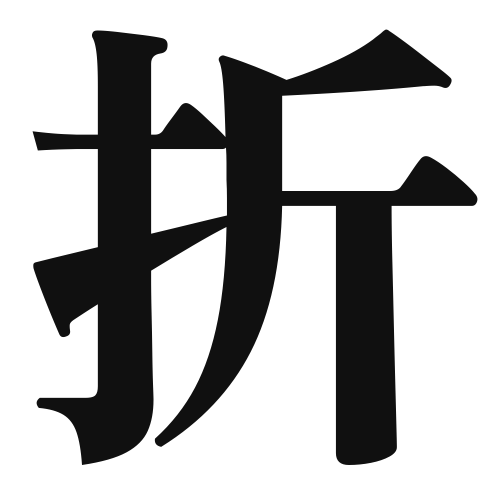1. Overview of Meaning
The kanji “折” (ori) primarily means “to fold” or “to break.” It is often used in contexts related to bending or folding objects, as well as in expressions that convey the idea of breaking or interrupting something.
2. Formation and Radical
Formation of the Kanji: The kanji “折” is a compound character (会意文字) that combines elements to convey its meaning. The left part, “折,” suggests the action of folding or breaking, while the right part is a phonetic component that helps indicate its pronunciation.
Radical: The radical for “折” is “折” itself, which relates to the action of folding or breaking.
3. Examples of Usage
Common Words and Phrases: Some frequently used words that include “折” are:
- 折り紙 (origami) – paper folding
- 折れる (oreru) – to break or to fold
- 折りたたむ (oritatamu) – to fold up
Example Sentences in Daily Conversation:
- この紙を折ってください。 (Kono kami o otte kudasai.) – Please fold this paper.
- 傘が折れました。 (Kasa ga oremashita.) – The umbrella broke.
4. Synonyms and Antonyms
Similar Kanji: A kanji with a similar meaning is “曲” (kyoku), which means “to curve” or “to bend.” However, “曲” emphasizes the curvature rather than the action of folding or breaking.
Opposite Kanji: An antonym is “伸” (shin), which means “to stretch” or “to extend,” representing the opposite action of folding or breaking.
5. Cultural and Historical Background
Relation to Japanese Culture: The concept of folding is significant in Japanese culture, especially in the art of origami, which transforms simple paper into intricate designs through folding techniques.
Proverbs and Idioms: One common saying is “折り合いをつける” (oriai o tsukeru), which means “to come to an agreement” or “to find a compromise,” reflecting the idea of bending or adjusting one’s position to reach a consensus.
